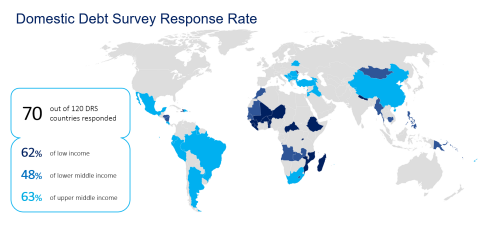Analyses of public debt and debt management in low- and middle-income countries have traditionally less focused on domestic debt. This is in part a consequence of the absence of a comprehensive database on domestic public debt and an outcome of the fact that, historically, external borrowing was dominant. Prior to the global economic and financial crises of 2008 for the majority of low- and middle-income countries external liabilities were the largest component of public debt, the target of debt restructuring and debt relief initiatives such as the Heavily Indebted Poor Countries (HIPC) and Multilateral Debt Relief Initiative (MDRI), and the core element of the joint IMF-World Bank Debt Sustainability Framework for Low-Income countries (LIC DSF).
Over the past decade, however, low- and middle-income countries have made substantial efforts to develop local public debt markets and increasingly relied on domestic sources of funds to finance budget deficits. This in turn has sparked the attention of the international financial community and led to demands for mechanisms to capture a comprehensive picture of the public debt of low- and middle-income countries, domestic as well as external, in a coherent and timely manner, in accordance with internationally agreed standards and definitions.
As part of this public sector debt transparency agenda a questionnaire on public sector domestic debt was sent to 120 low- and middle-income countries that report to the World Bank Debtor Reporting System (DRS). This survey aimed to: (i) assess the potential for governments to comply with expanded debt reporting requirements; (ii) assess the countries’ legal and statistical capacity to gather and record domestic debt; and (iii) assess the quality of domestic debt recording and classification.
